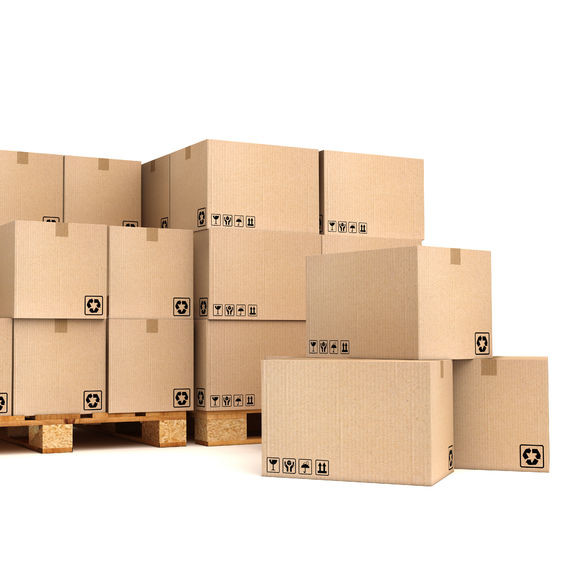Storage and Transportation
What is Storage and Transportation (S&T)?
Storage and transportation allow food products to reach different stages of the supply chain. S&T are temporary steps that prepare food to be entered into production plants, and to be sent to distribution centers and retail stores (commercialization stage). Foods that can be stored and transported include:
- Raw materials
- Additives
- WIP
- Packaging materials
- Packaged goods (finished)
Regulatory compliance
S&T of food must be carried out under conditions that will protect against allergen cross-contact and against biological, chemical (including radiological), and physical contamination of food, as well as against deterioration of the food and the container.
Storage of foods is under control of the current good manufacturing practices (21 CFR Part 117). This rule states that:
- Raw materials, other ingredients, and rework must be stored in bulk, or in containers designed and constructed so as to protect against allergen cross-contact and against contamination, and must be held at such temperature and relative humidity and in such a manner as to prevent the food from becoming adulterated. Material scheduled for rework must be identified as such.
- Liquid or dry raw materials and other ingredients received and stored in bulk form must be held in a manner that protects against allergen cross-contact and against contamination.
- Cleaned and sanitized portable equipment with food-contact surfaces and utensils must be stored in a location and manner that protects food-contact surfaces from allergen cross-contact and from contamination.1
Food transportation operations are thoroughly addressed in 21 CFR Part 1 – General Enforcement Regulation, Subpart O – FSMA Final Rule (Sanitary Transportation of Human and Animal Food). This rule establishes requirements for:
- The design and maintenance of vehicles and transportation equipment to ensure that it does not cause the food that it transports to become unsafe. For example, vehicles and equipment must be suitable and adequately cleanable for their intended use, and capable of maintaining temperatures necessary for the safe transport of food.
- The measures taken during transportation to ensure food safety, such as adequate temperature controls, preventing contamination of ready-to-eat food from touching raw food, protection of food from contamination by non-food items in the same load or a previous load, and protection of food from cross-contact, i.e., the unintentional incorporation of a food allergen.
- Training of carrier personnel in sanitary transportation practices, and documentation of the training. This training is required when the carrier and shipper agree that the carrier is responsible for sanitary conditions during transport.
- Maintenance of records of written procedures, agreements, and training (required of carriers). The required retention time for these records depends upon the type of record and when the covered activity occurred, but does not exceed 12 months.2
Relevance
Inside any food supply chain, companies and interested parties (e.g., suppliers and customers) commercially interact with each other. Customers purchase food products, and the supplier delivers in time, quality, and quantity as agreed. The food products are then unloaded, received, and stored under appropriate conditions.
The choice of S&T method is a function of:
- Distance between origin (supplier) and final destination (customer)
- Strategies for storage, e.g., FiFo
- Perishability of products
- Type of product (dry or liquid)
- Volume of product (e.g., Minimum Order Quantities)
- Specifications regarding product holding conditions (e.g., temperature, relative humidity, modified atmosphere, degree of sterility/hygiene of the tanker/container structure, mechanical damage sensitivity)
- Washing, cleaning, and sanitizing requirements of tankers/containers
- Regulatory requirements regarding the method of S&T
Components of a storage and transportation program3
- Written specifications for the construction material (food-grade or non-food-grade nature) of S&T equipment, e.g., tanks, containers, silos, etc.
- Procedures for washing, dry cleaning, and sanitation of holding equipment. Such procedures should contain, at a minimum, chemical concentration of detergent, degreaser, and sanitizer; wash and rinse times; and temperatures for each step performed.
- Procedures for washing, dry cleaning, and sanitation of transportation containers. Such procedures should contain, at a minimum, chemical concentration of detergent, degreaser, and sanitizer; wash and rinse times; and temperatures for each step performed).
- Procedures for the inspection of products to be loaded and received. These should include the inspection of bill of lading, driver identification, seal numbers, transportation parameters (e.g., temperature, %RH), and fumigation and wash certificates; verification of seal numbers prior to removing; examination of the interior of the tanker to be sure it is clean and free of cracks, corrosion, condensate or foreign materials; and note of any presence of off-odors or residual material in the tanker.
- Forms to provide evidence of inspections performed
- Documentation and implementation of acceptance/rejection criteria of products prior to receipt
References
- U.S. Food and Drug Administration. “21 CFR 117 – Current Good Manufacturing Practice, Hazard Analysis, and Risk-based Preventive Controls for Human Food.” 1 Apr. 2017, https://www.accessdata.fda.gov/scripts/cdrh/cfdocs/cfcfr/CFRSearch.cfm?fr=117.130
- U.S. Government Publishing Office, Electronic Code of Federal Regulations (e-CFR) “CFR 2017 Title 21 Vol 1 Part 1 Subpart O – Sanitary Transportation of Human and Animal Food.” 6 Apr. 2016, https://www.gpo.gov/fdsys/pkg/CFR-2017-title21-vol1/pdf/CFR-2017-title21-vol1-part1-subpartO.pdf
- AIB International. “The AIB GMP and Prerequisite Guide, Chapter 5, “Transport and Storage.”


